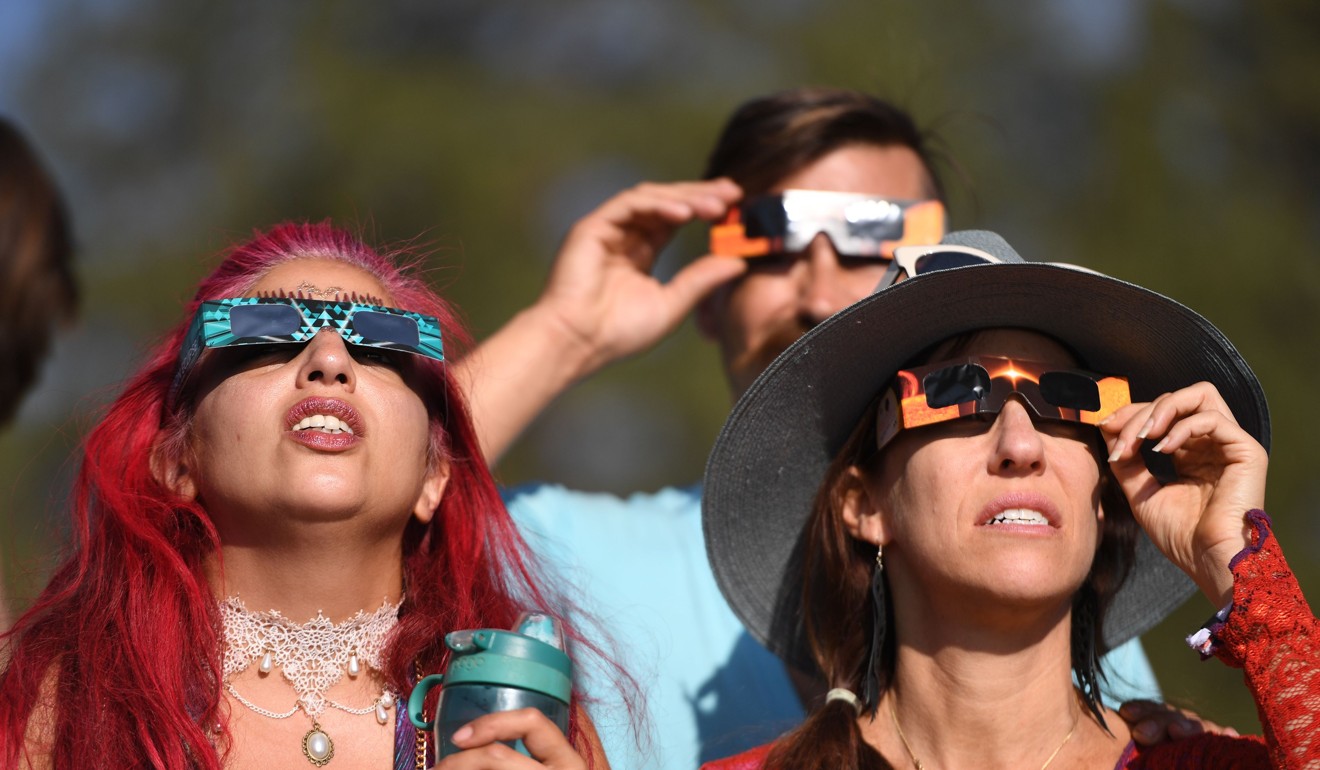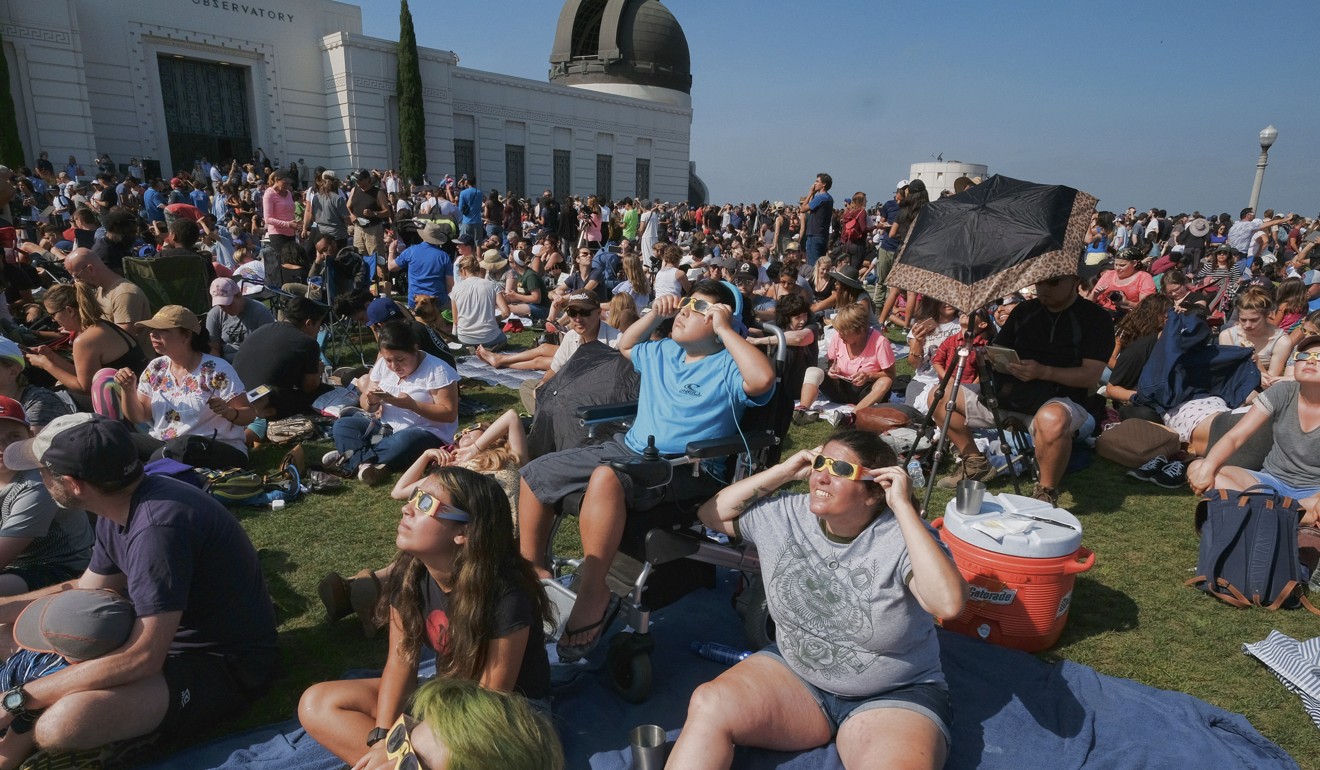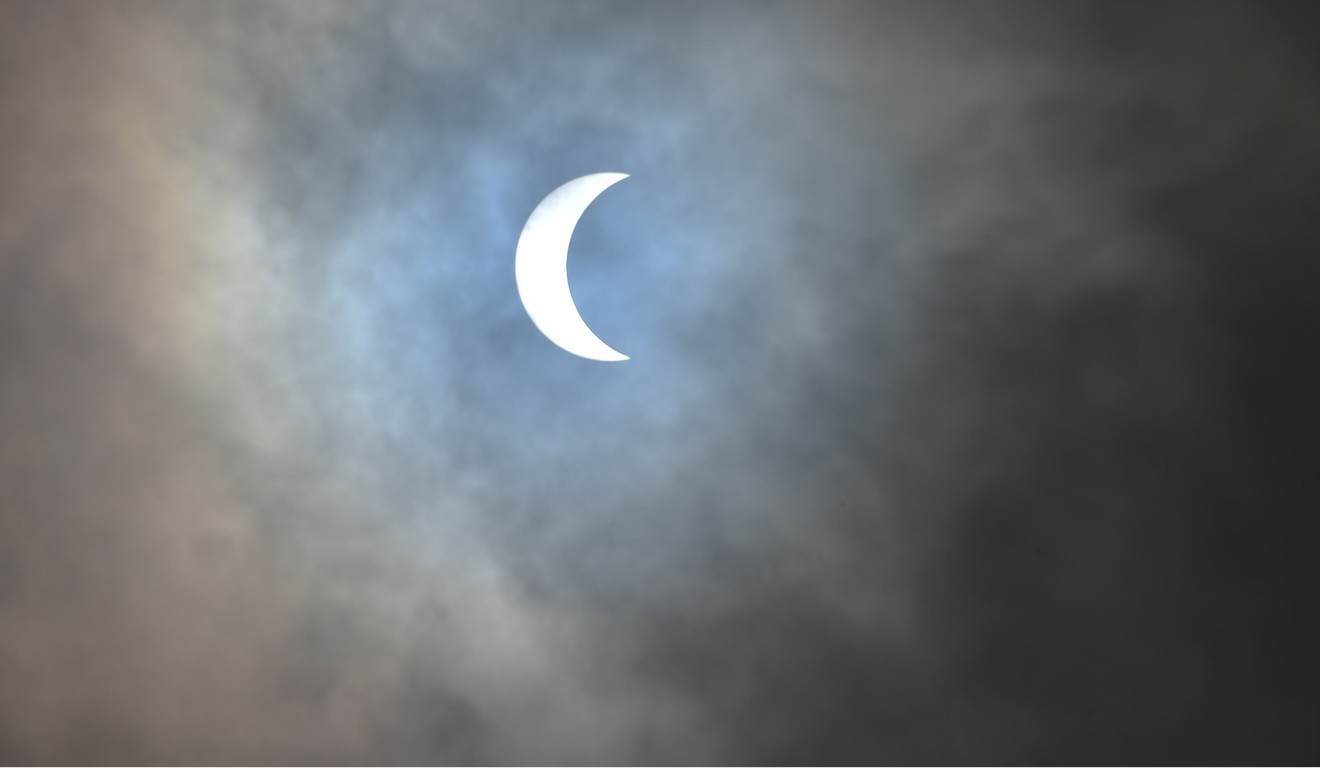
Millions of US eclipse-watchers are awed by the reality of totality
Millions of Americans gazed in wonder through telescopes, cameras and disposable protective glasses on Monday as the moon blotted out the sun in the first full-blown solar eclipse to sweep the US from coast to coast in nearly a century.
The stars came out in the middle of the day, zoo animals ran in agitated circles, crickets chirped, birds fell silent and a chilly darkness settled upon the land as Americans witnessed its first full-blown eclipse since World War I.
“It’s really, really, really, really awesome,” said 9-year-old Cami Smith as she watched the moment of totality from a gravel lane near her grandfather’s home at Beverly Beach, Oregon.
The temperature dropped and birds quieted down as the line of darkness raced across the continent. In Boise, Idaho, people clapped and whooped, and the street lights came on briefly in the middle of the day, while in Nashville, Tennessee, people craned the necks at the sun and knocked back longneck beers at Nudie’s Honky Tonk bar.
It promised to be the most observed and photographed eclipse in history, with millions staking out prime viewing spots and settling into lawn chairs to watch, especially along the path of totality, the line of shadow created when the sun is completely obscured.
The shadow, a corridor just 60 to 70 miles (96 to 113 kilometres) wide, came ashore in Oregon and then began travelling diagonally across the country to South Carolina, with the darkness lasting only around two to three minutes in any one spot.


Passengers aboard a cruise ship in the Caribbean watched it unfold as Bonnie Tyler sang her 1983 hit “Total Eclipse of the Heart.”
Several minor-league baseball teams, one of them the Columbia Fireflies, outfitted for the day in glow-in-the-dark jerseys and briefly suspended play.

With 200 million people within a day’s drive from the path of totality, towns and parks saw big crowds. Clear skies beckoned along most of the route, to the relief of those who feared cloud cover would spoil this once-in-a-lifetime moment.
“It’s like nothing else you will ever see or ever do,” said veteran eclipse-watcher Mike O’Leary of San Diego, who set up his camera along with among hundreds of other amateur astronomers gathered in Casper, Wyoming. “It can be religious. It makes you feel insignificant, like you’re just a speck in the whole scheme of things.”


Nasa solar physicist Alex Young said the last time earthlings had a connection like this to the heavens was during man’s first flight to the moon, on Apollo 8 in 1968. The first, famous Earth rise photo came from that mission and, like this eclipse, showed us “we are part of something bigger.”
With a half hour to go before totality, Nasa’s acting administrator, Robert Lightfoot, enjoyed the moon’s “first bites out of the sun” from a plane flying over the Oregon coast and declared it “just an incredible view.”
“I’m about to fight this man for a window seat,” Lightfoot said, referring to a fellow Nasa official.
Nasa’s planetary science director, Jim Green, a usually talkative sort, managed an “Oh, wow!” when totality arrived in Idaho Falls, Idaho, and shouted: “There’s Venus! There’s Venus.”
Nasa reported 4.4 million people were watching its TV coverage midway through the eclipse, the biggest live stream event in the space agency’s history.
At the White House, despite all the warnings from experts about the risk of eye damage, President Donald Trump took off his eclipse glasses and looked directly at the sun.
Hoping to learn more about the sun’s composition and activity, Nasa and other scientists watched and analysed from telescopes on the ground and in orbit, the International Space Station, air planes and scores of high-altitude balloons beaming back live video.
Citizen scientists also planned to monitor animal and plant behaviour as daylight turned into twilight and the temperature dropped. Thousands of people streamed into the Nashville Zoo just to watch the animals’ reaction.
The Earth, moon and sun line up perfectly every one to three years, briefly turning day into night for a sliver of the planet. But these sights normally are in no man’s land, like the vast Pacific or Earth’s poles. This is the first eclipse of the social media era to pass through such a heavily populated area.

The moon hasn’t thrown this much shade at the US since 1918, during the country’s last coast-to-coast total eclipse. In fact, the US mainland hasn’t seen a total solar eclipse since 1979 and even then, only five states in the Northwest experienced total darkness.
Scientists said the total eclipse would cast a shadow that would race 2,600 miles (4,200 kilometres) through 14 states, entering near Lincoln City, Oregon, moving diagonally across the heartland over Casper, Wyoming, Carbondale, Illinois, and Nashville, Tennessee, and then exiting near Charleston, South Carolina.
Shawnee National Forest in southern Illinois was in line to see the longest stretch of darkness: 2 minutes and 44 seconds.
All of North America was on track to get at least a partial eclipse, along with Central America and the top of South America.

Joe Roth, an amateur photographer, travelled south from the Chicago area to Alto Pass, Illinois, to catch his first total solar eclipse on his 62nd birthday, no less. He said the stars aligned for him, “a Kodak moment for me to cherish and experience.”
Kim Kniseley drove overnight from Roanoke, Virginia, arriving in Madisonville, Tennessee, before dawn to get a parking spot at Kefauver Park, where by sunrise dozens of folks had claimed benches and set up tents.
He said he could have stayed home in Roanoke and seen a partial eclipse of 90 per cent, but that would have been like “going to a rock concert and you’re standing in the parking lot.”
Scientists warned people not to look into the sun without protection, except when the sun is 100 per cent covered. Otherwise, to avoid eye damage, keep the solar specs on or use pinhole projectors that can cast an image of the eclipse into a box.
During the last coast-to-coast total eclipse in the US in 1918 near the end of World War I, Woodrow Wilson was president. The next total solar eclipse in the US will be in 2024. The next coast-to-coast one will not be until 2045.

